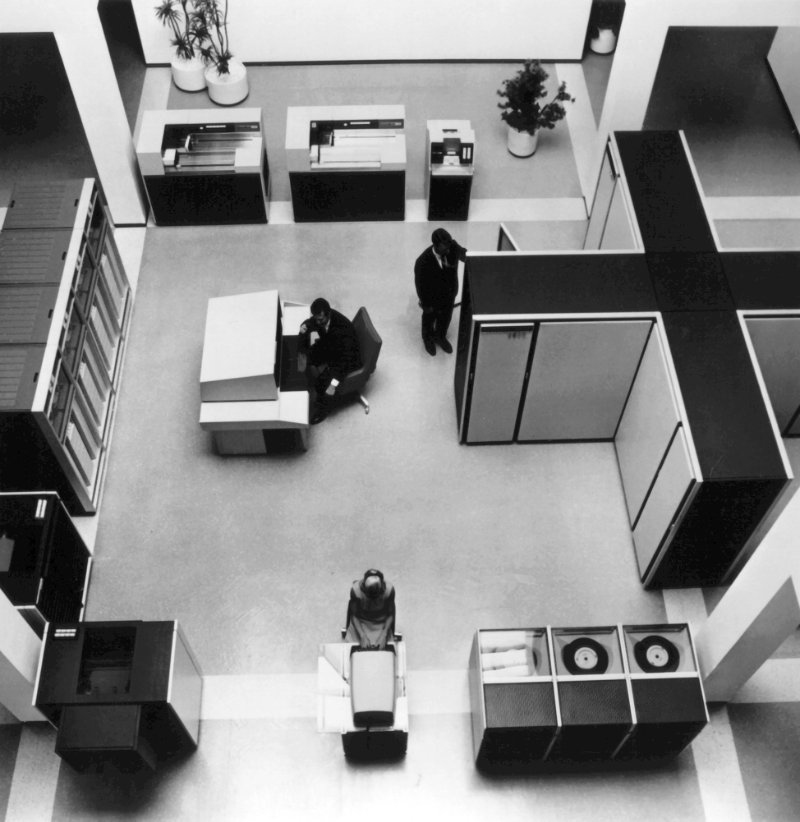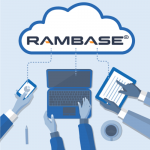Insurance – an Industry in Disruption and Growth

I bought a new Volvo a while ago and was surprised when my insurance company, Topdanmark, declined to take it on. “It needs to be retrofitted with a GPS tracker,” they said. However, the dealer had confirmed that the car came with such a device factory-fitted. We even tested it on delivery. By pressing a button in front of the rearview mirror, the car called the alarm centre, who immediately knew where I was, how much diesel I had in the tank and some other information about the car’s condition. If an airbag got activated, the car would even auto-call the alarm centre and post its position. I could read the same information in the Volvo app on my iPhone, from where I could also start the cabin heater, open and lock the car, blink the lights, honk the horn and get an overview of all my trips.

The Volvo dealer took action, and a few minutes later a representative of the insurance company IF called. Before the end of that day, the car was fully insured, and before the end of the week, all my other insurance policies had got a new home with IF, including my business stuff.
When I sit across from Christian Kromann from Tia Technology in his office in Virum north of Copenhagen, I understand that my experience is not representative of the situation in the Danish insurance industry. In spite of the country’s, tiny, size and its linguistic peculiarity, insurance companies in Denmark are fairly advanced, both when it comes to digitising internal processes, offering new products and modernising the relationship with their customers. For Tia, a company that exclusively develops IT solutions for insurance companies, Denmark, despite its modest size, is a technologically advanced domestic market, and an excellent platform for international activities.
An insurance company is an information processing factory

Insurance is at its core the processing of information. The insurance industry was among the first to invest in computers and software. By the 1970s and early 1980s, insurance companies had purchased large mainframe computers from IBM, and each of them developed proprietary systems, believing that internal process optimisation would become the prime competitive parameter. These were monster investments tied to IBM’s proprietary technologies, leaving insurance companies unable to take advantage of the development and decline in price of the minicomputer and especially the PCs in the 1980s and 1990s. Many insurance companies continue to depend on their mainframe-based core systems, which are both expensive to maintain and hard to adjust when introducing new products. It makes them vulnerable when customers become less loyal, and to insurgents without legacy liabilities when they begin fast-paced innovation.
When customers change behaviour and technology makes new business models possible (and vice versa)
The days where customers were loyal, reliable and predictable and could all be treated the same are long gone. The challenge is that no one knows exactly in what direction behavioural changes are going. Simultaneously, how will the industry be affected by the opportunities that technology offers?

Insurance can be sold at multiple consumer touch points – including at sports events. When a sizeable German football club offers its many hundreds of thousands of fan club members an insurance product at a favourable price, it becomes a success because the club already has a positive relationship with its members. The club subcontracts with the insurance companies, who then have to offer wholesale prices and let go of the customer relationship. It is not just sports clubs that have discovered the merchandise potential that members’ loyalty allows. Insurance is a service that may be hard to produce; however, it is quite easy to distribute when you already enjoy the customer’s loyalty. Today, we can buy insurance from the airline, the bank, the car dealer, the auto club, the Apple Store and our trade organisation. Will we be able to buy from Amazon, Facebook or Google in the future?
The cross-selling opportunities also go the other way, and many insurance companies now offer products and services that prevent or reduce the consequences of an insurance event. Road assistance, burglar and smoke alarms, moisture meters and child seats for the car are obvious examples, but also newspaper subscriptions have been seen offered.

The American insurance company Lemonade has introduced an entirely new insurance model, where it takes 90 seconds to become a customer, and most of the claims are paid in cash 3 minutes after they are filed. Lemonade is the insurance industry’s Apple. Gone are the dark suits, white shirts and silk ties. Lemonade wears jeans and T-shirts – just like their customers.
Will future generations own less and rent more? Will they share more? Now that my car can report my driving behaviour, why can’t my insurance company offer me a customised product? Why do I have to tell my insurance company how much I drive when my car automatically reports it? Why doesn’t my insurance company ask for access to my home security system? My house can tell if it is locked or not and if I am home or away when flooding can be expected. My smart-watch can tell where I am, where I am going and how I am doing. Which insurance products make sense when I travel, buy a new lawnmower, get married, get divorced, have children, have grandchildren, start a company, etc? Through our mobile devices and social media activity, many crucial events can be predicted before they happen and new relevant insurance products can be offered. It will happen, but who is going to deliver is not yet fully clear.
All insurance-innovation requires information technology
Many insurance companies have realised that the world is changing and have acknowledged that innovation is an ongoing core activity that has two main outcomes:
A: Improvements to the existing business model that can be incorporated in the current structure with reasonable organisational and IT system adjustments.
B: Innovation that is best handled in a green-field set up.
The challenge with A is that it requires a flexible IT platform that can be adapted quickly and cost-effectively to support the changes.
The challenge with B is that you are often mistaken. Rapid testing of the ideas in a small-scale format without massive IT investments is a requirement.
A change in the go-to-market model

In this market in change, we find Danish Tia Technology, which specialises in developing software for the modern insurance company, where the optimisation of internal processes, improved customer relationships and agility weighs equally high. Until a few years ago, Tia was a pure software house that left the implementation of the software to consulting companies, so-called implementation partners. It was the classic go-to-market solution in the software industry and the textbook design for fast global scaling.

“The indirect model works fine when there are many small projects on which new dealers can practice before they embark on the big projects,” says Christian Kromann, CEO of Tia Technology. “Our market is different. There are not enough projects in even the big countries to feed a dealer channel, and then we become too dependent on the individual partner. Projects in our industry are too few, too big and too critical that we can´t leave the responsibility for success to implementation partners. Our customer projects are 25% software, 50% implementation and 25% organisational change. We have to take charge and our customers expect us to have some skin in the game too. Therefore we decided to take direct control of our core markets. “
The shift from the indirect to the direct go-to-market approach has paid off and can be read in the company’s annual reports. The implementation partners, which have a total of 1,000 TIA experts, are still important, but their role now depends entirely on the market in which the projects are located.
The global strategy

Tia Technology is one of a handful of global players.
“With such a small domestic market as Denmark, we have had a global outlook from the start,” emphasises Christian Kromann. “Today, we generate 75% of our turnover abroad, but we cannot be everywhere and bid on all projects in the world, so we are considering carefully where to focus our resources.”
In order to concentrate the effort, Tia Technology has divided the global market into four categories:
- Established core markets
Category One includes the Nordic countries, the DACH [1] countries, the Netherlands, the UK, Poland and South Africa. In these countries, Tia has a solid position with many customers and their own representation. They have invested massively in localisation, i.e. integrations to all relevant platforms in these markets, which, in countries with a well-developed administrative infrastructure, can be quite demanding. However, it means that customer risk is minimised and therefore the choice of using Tia becomes easy. - New core markets
After thorough market analyses, Thailand, Malaysia and Singapore have been designated as a strategic growth centre. So has sub-Saharan Africa, which can be accessed via South Africa, and the rest of Eastern Europe via Poland. Own representations are now established here, where an immature administrative infrastructure makes localisation less demanding. - The rest of the world
Projects elsewhere in the world are run on an opportunistic basis and only with an implementation partner as the lead on both account management and implementation. - No-Go markets
The USA and China, which are unquestionably the world’s largest markets, have been designated as no-go territories.
“We’ll probably come to them at some point, but it’s not right now,” explains Christian Kromann. “We are running at our full capacity in the markets where we are active, and the complexity of the two markets would be a major distraction. You have to be exceptionally well bolstered when you decide to enter the USA and China and secure a defendable position. We get inquiries regularly but politely decline.”
Market research
Whichever country or region you choose to actively participate in, it requires investment in product adaptations and in your own organisation. Therefore, Tia keeps an eye on a number of indicators that can tell when a country should be added to the “short list”. From the short list, the countries, where an actual market analysis must be carried out, are selected.
“When a country climbs to the top of our short list, we hire a local and experienced business developer who can build relationships with the country’s insurance community,” says Christian Kromann. “His or her job is not to sell Tia’s solutions but to get to know and map the market and the industry thoroughly. The mapping includes an assessment of the requirements for localisation, an estimate of the community’s investment expectations for the coming years and an appraisal of the competitive situation. ”

After about 6-12 months, Tia has a good picture of the situation and can decide whether the next step should be taken. The insurance companies that Tia serves, appreciate proximity and continuity. Flirting only will not lead to lasting relationships. At some point, a firm commitment must be made, an office opened and marketing, sales and pre-sales resources employed. The potential customers expect a credible plan for implementation and on-going support.
[1] DACH includes Germany (D), Austria (A) and Switzerland (CH).“We cannot know if it takes 12, 18 or 24 months before the first customer contract is signed,” says Christian Kromann. “We have to respect the customer’s decision-making process. But once we have said A, we have to be patient until it is possible to say B. Therefore, the market and industry assessment process is crucial. Fortunately, the respect for us as a supplier is enhanced by the fact that we do not start with the hard sell, but listen to understand first.”
You will find more about Tia Technology and other IT companies’ approach to internationalisation in my forthcoming book Going Global on a Shoestring.







